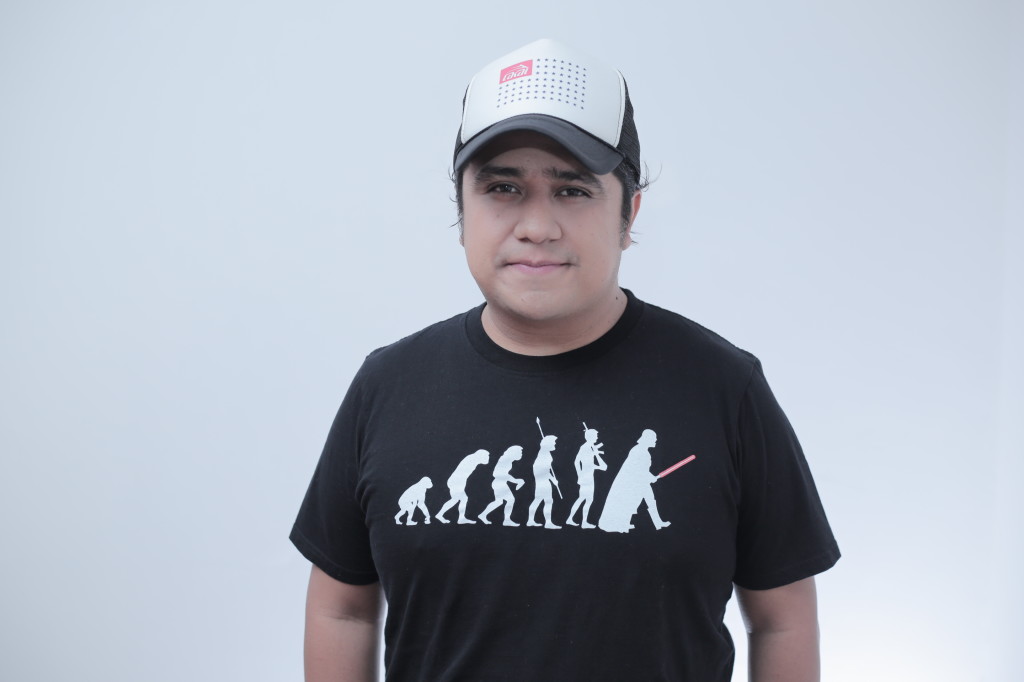
The Last Days of the Recording Room
by Wicho López. June 21, 2015
In the following video, we´ll see how the song “Stand by me” is being recorded by musicians and engineers from the “Playing for Change” movement. The first time I saw it. I was moved. I was excited to see the creative process of recording audio being accomplished in a innovative way.
But a question rises:
How did the engineer kept the recording sounding seamlessly?
Was this a glimpse of the future in recording audio?
Take a look at this amazing video/audio recording.
From 1920s to 1950s
Around 1920 all recording were made “direct to disc”.
Daniel M. Thompson, author of “Understanding Audio” (Berklee Press, 2005) help us during this journey from these days to our days.
“The storage/plackback media were either wax cylinders or shellacs discs that were cut live, one at a time. The recording studio setup consisted of a room in which musicians were arranged around a horn. This horn gathered sound and fed it acoustically to a vibrating diaphragm and cutting stylus. Mixing simply consisted of arranging the musicians and instrumentes at varying distances and heights from the main recording horn.
In this setup there was no need for room separation:
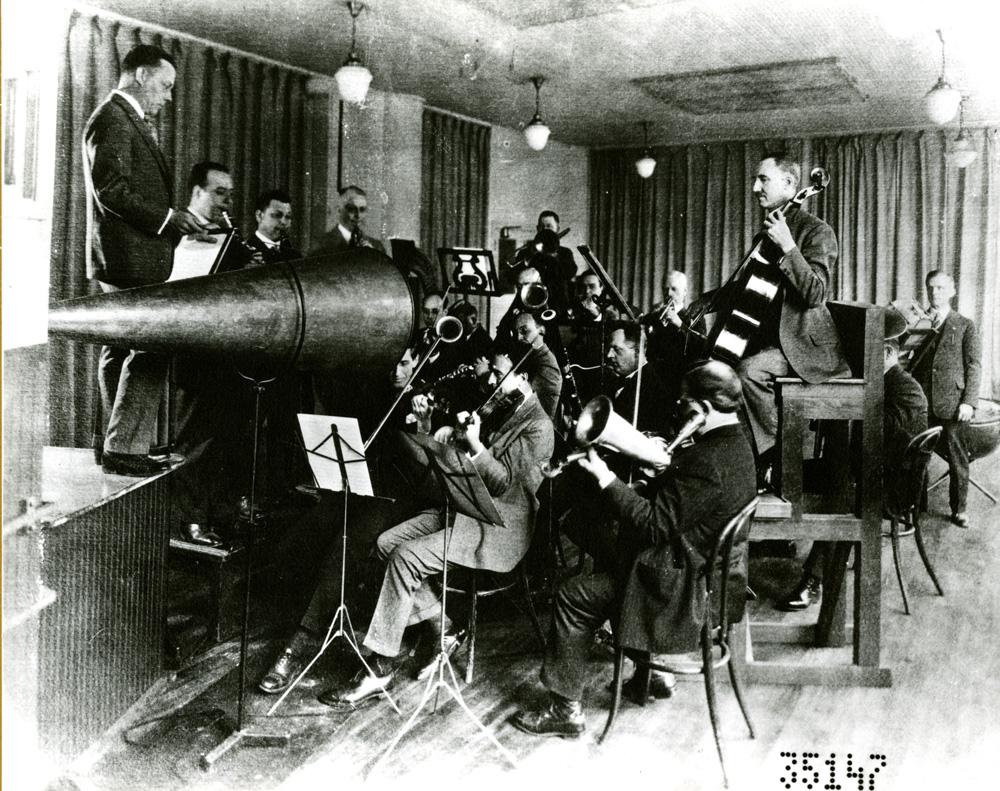
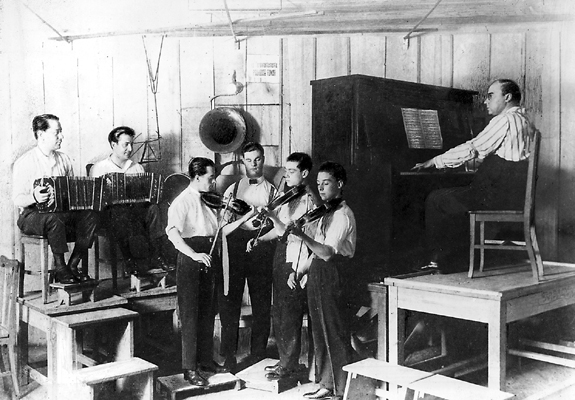
(“The recording studio setup consisted of a room in which musicians were arranged around a horn.”)
But with the development of tube amplifiers, condenser microphones and moving from an acoustical to an electrical process of recording sound into the disc, then it came the recording console or mixer. A device that might group together all level controls and switches for more then one microphone.
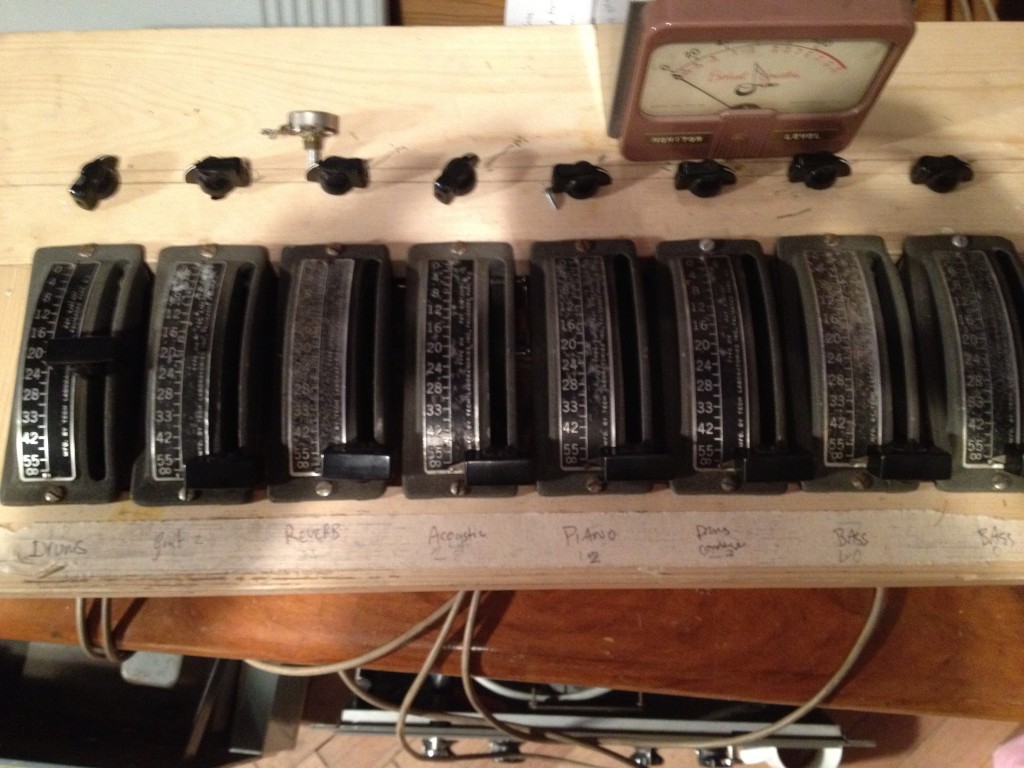
(1930´s Tech Laboratories faders built in this Mixing Console)
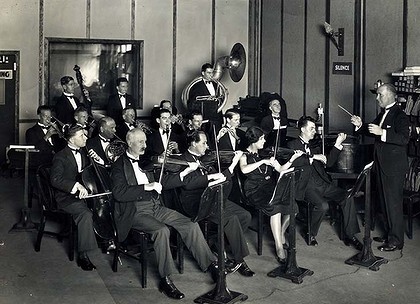
(The ABC Studio Orchestra in the 1930s.
You can see the recording room were the musicians played and behind them, behind the glass,
the control room were equipment was placed for operations.)
In the 1960s
To me, not only is the Abbey Road Studios in London legendary for the Beatles (and many other great artists) recordings, but because of the science and technological importance the brought to the recording industry. The staff used white robes! They surely took their scientifically job very seriously and the engineers wore suits to the recording sessions. (I can´t imagine me wearing even a tie to a session today).
This is the construction plans of Recording Room Number One. Imagine being there to record your music!
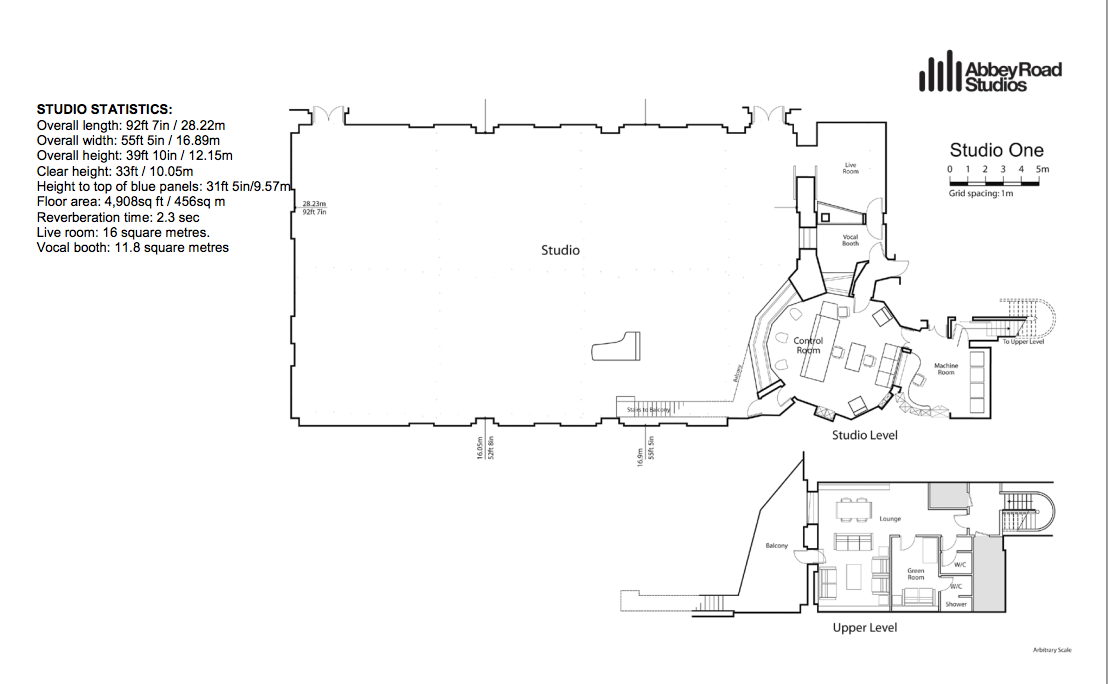
Actually you can go there without leaving the confort of your chair.
Want to take a tour inside? This virtual tour inside of Abbey Road can take you a few hours. (or a day)
Take your time. I´ll be here when you are finished.
Meanwhile I´ll pour me a pint of guatemalan dark beer.
Go INSIDE Abbey Road Studios now.
As we approach the 1980s
Technological advances like creating equalisers, compressors, rever and delay modules, synthesisers and many many “toys” recording techniques advances as well. Beginning with double tracking, overdubbing, 8 track, 16 track, 32 and more track recording, the creation of stereo we see more recording rooms built inside of a recording room as well. Specially for singers: The vocal Booth (or the ISO booth. Also used to isolate guitars amps, percussion instruments or other singers / speakers.
We see “bigger than life” recording rooms, and “Man vs the machine” control rooms. Over-produced style. “I´m a material producer living in a material world”
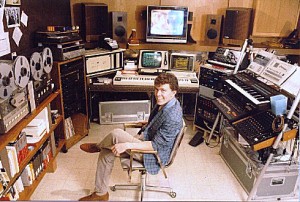
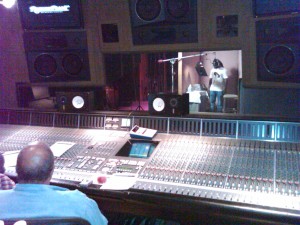
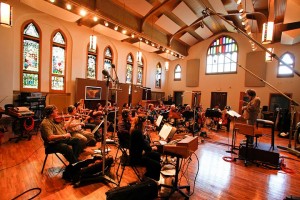
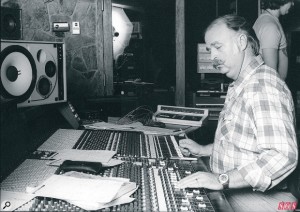
(Clockwise from Top Left: 1. Greg Holmes (Rush) in his Fairlight studio. 2. Quincy Jones sitting behind the desk during a recording session with T-Pain at Record Plant Recording Studios. 3. Bruce Swedien at the Harrison console in Westlake Studios, mixing Michael Jackson´s “Thriller”. 4. The amazing Ocean Way Recording Room in Nashville, TN which accommodates up to 80 musicians)
From 1990s till today
Recording rooms are necessary as the process of recording changes.
Butch Vig (Garbage) tells stories about producing and recording Nirvana´s “Something in the way” Kurt Cobain wash´t even inside the Recording Room!
Watch the story told by Butch himself
I like to believe that the Recording Room, is like a character itself.
I read many producers claim “I like this or this particular recording room for this or that particular drum sound”. So yeah. Recording Rooms are important.
But today, how important is it, really?, to use a proper isolated room for your recordings?
In this period of time, we see in 10 short years the technological advance from using tape machines, to A-Dats to DAW (Digital audio workstation) built-in synthesisers and software. Probably ProTools was the most relevant, released in early 1990s showed the future.
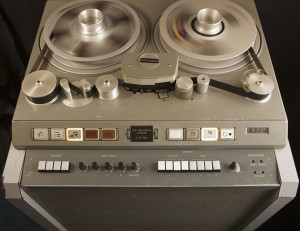
(EMI´s J37 4-track Machine. EMI was the company that owns Abbey Road Studios)
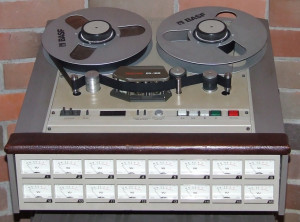
(Tascam´s 16track 2″ tape recorder)

(Alesis A-Dat. This device used VHS tape as an audio registry vehicle)
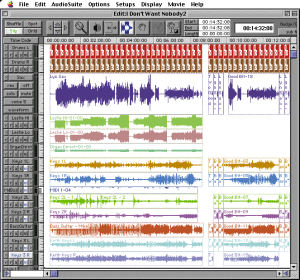
(Digidesing´s ProTools III screen on a Mac. Version 11 has just released)
Recording 150 voices for an audio-bible
In late 2009 I was asked to produce and record an audio-bible with more than 150 voices. Many of them recording artists and Latin american christian celebrities.
It was the new testament, and it was dramatised.This meant all characters had unique voices and they acted out the parts. Full production: Voice, Music and Sound Effects.
If this project was to be made between 1960 and 1990 we would probably think about this process:
1. We need to book a studio as big as Abbey Road, Ocean Way or The Record Plant.
2. We need to make travel arrangements for all of the 150 voices, so we can rehearse, and record the books.
3. Once the “Master Voice Track” is assembled then we need to book and orquesta and record on top of it.
4. Add sound effects.
5. Mix and Master.
Right?
Yeah right. This would probably cost millions of money and time. Probably 5 years in the making. I´m not exaggerating.
With my partner, JM Reyes, an expert in audio-books we decided to use technology in our favor.
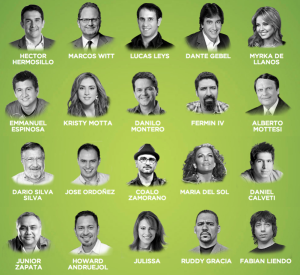
(20 of the 150 voice-cast that included latin american christian celebrities like Marcos Witt, Lucas Leys, Alberto Motessi, and other celebrities like mexican pop singer Maria del Sol, Monterrey´s rapper Fermin IV -former member of Control Machete, probably the most representative latin american act in Hip-Hop. And Univision´s news anchor Myrka de Llano)
1. First we would treat the script as audio files.
With this in mind we “stripped” the books and lines and characters and once casting was done, we sent these new scripts to the vocal talent. For many it was a surprise, since they -kind of knew- what was going on, but never could listen to the full dialogues.
If the text showed us something like this:
Mark Chapter 3
“verse 1 Another time Jesus went into the synagogue, and a man with a shriveled hand was there. verse 2 Some of them were looking for a reason to accuse Jesus, so they watched him closely to see if he would heal him on the Sabbath. verse 3 Jesus said to the man with the shriveled hand, “Stand up in front of everyone.” verse 4 Then Jesus asked them, “Which is lawful on the Sabbath: to do good or to do evil, to save life or to kill?” But they remained silent. verse 5 He looked around at them in anger and, deeply distressed at their stubborn hearts, said to the man, “Stretch out your hand.” He stretched it out, and his hand was completely restored.
In this text we “see” two voices. Jesus and the narrator. Jesus speaks three lines: “Stand up in front of everyone.” on the third verse. “Which is lawful on the Sabbath: to do good or to do evil, to save life or to kill?” on the fourth, and “Stretch out your hand.” on the fifth verse. So it was easy to think of computer file nomenclature with numbers and the alphabet like this:
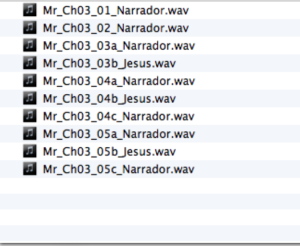
So whenever we where putting the pieces together, we didn´t even need to listen; just watching.
2. We decided to “kill” the recording room
We knew that all of the recordings where going to be made, at best, at the vocal talent´s own recording studio. Profesional or not. But most of the recordings where going to be made “on the road”. At their offices, at hotel rooms for christian conventions, anywhere they could find time and some sort of microphone at their reach.
We even got one of the vocal talents to record his 15 few lines on this iphone at a V.I.P. Airport lounge!
3. We used portable vocal booths
We purchased some and made some. We even travelled with foam in our bags -just in case-
Portable vocal booths are a sound saviour!
This is a neat post on portable vocal booths. Read it.
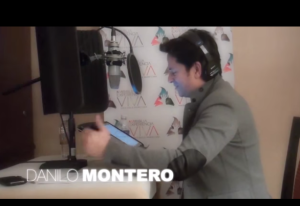
(Celebrity singer/preacher Danilo Montero recording on a hotel room.
We set up the portable vocal booth on a desk, between a wall and the TV module)
4. We recorded with laptops, we edited on desktops.
Dropbox was introduced just a few months after we got started.
We chatted on Blackberrys.
We decided to record all vocal audio with laptops, using ProTools and Mboxes as audio interfaced with a Rhode NT1 microphone as a standard. There where some occasions another microphone was used of course, but we needed to make sure we could standardised the gear used.
Today, a Mic from Apogee and Ableton Live would have been sufficed. But in those days, this awesome mic wash´t even invented.
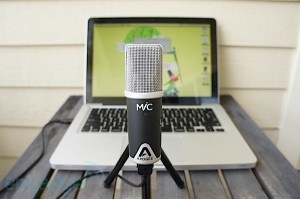
(Apogee´s Mic.
The Apogee Mic has amazing digital-analog converters, and it´s powered vía a USB device, such as a laptop, iPad or iPhone.)
5. Remember recording room was important? Almost like a character itself?
Well, since we “killed” the recording room.
We used it´s tail: The “Room tone”.
Every single time we went into a recording ourselves, or directed one from Skype onto another recording engineer in another part of the world, we always started analysing the “Room Tone” as a guide on what we where up against.
We did recording all over the United States, Mexico, Guatemala, Honduras, Costa Rica, Argentina, Colombia, Chile, Perú, and Spain. Just like the “Stand by Me” video, only 105 hours longer and we could´t have done it with the smart use of the “Room Tone” as a sound label for each voice before it was compiled to the “Master voice track”.
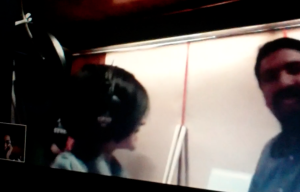
(That´s me in the small Skype window on the lower right corner, during our recording session with the amazing Fermin IV. Also pictured, his daughter in between takes telling each other “knock-knock” jokes. Fun Day!.
During this day, Fermin IV read a passage of the 2nd book of Timothy and I noticed how without a metronome, he was reading “on-beat”.
So I played around with the audio graph and noticed a pattern. I added a quick beat using “Boom” (a 808 drum kit) in Pro Tools to do the following exercise:
LISTEN TO Fermin IV reads on-beat)
6. Finishing
So, not only the script of each book determined where was the music and sound effects cued in and out, but also a “dirty” recording would give us the direction of covering the noisy, or roomy, of damped “Room Tone” with music and sound effects.
Sometimes if the character´s voice was too “reverb-very” for the scene, we would drop a few outdoors sound effects like a forest, or a windy scenario. If the voice was too damped after applying Eq, we would ad a music bed with a lot of strings, and wind instruments to help the voice up.
It was a great 2 year adventure.
And it was a project we did like a “backpack” producer would today. And without a DAW like ProTools or Live, we could´t have done it properly.
You can purchase a copy on Audible.
Conclusions
1. Yes, these are The Last days of the recording room as we know it.
But it does´t mean we don´t need our best judgment or creativity to record vocals, drums, percussions or other instruments to make our song or audio project the best we can.
Technology helps, and can restore, and make miracles. But not always.
Start your project knowing what the end will be first.
Roy H. Williams, an advertising consultant always advice: “Know how to end”.
I think of like like a movie. You want the ending to be great. So start with the last scene and work your back backwards.
Recording audio could be like this too, and when recording in a though scenario, “beginning at the end” sounds like great advice.
2. Smart use of your smart devices.
It´s best if we think like our iPhones, and usb microphones are just as important as a condenser mic, or that its like that horn used on early audio recordings.
3. Isolate or Frustate.
Always have a Portable Recording Booth handy. Or at least some isolating foam. Or some egg carton. Be creative. The goal is to damp some noise. But there will be some occasions where noise can be your friend.
I´ve seen some colleges use the background noise of their gardens, as you would use white noise for sidechaining.
4. Use your “Room Tone”
In the following video, I´ll try to teach you what I mean by learning to use your “room tone”
5. Processing within Ableton Live
Now, when in need; These are some awesome devices on Ableton Live that would help you with noisy audio.
(I know there are great noise reduction plug-ins from manufactures like Waves, and others like SoundSoap, Christian Budde -Free for Windows- or Izotope RX4, but some of them are also expensive. So I´ll try to point out some basic, not in a profound way, to deal with noise using the built-in devices from Ableton Live Suite)
a. Editing
Once you have your “Room Tone” analyse, you´ll want to decide where to cut unwanted audio, or leave it in.
Depending on your source, you´ll want to edit first.
1. Cut where your unused audio is. Where silence is, where unwanted natural sound is (like breaths and finger fret)
2. Use fades.
b. SPECTRUM ANALYSIS
Remember: Include “Spectrum Analysis” first and last of your chain!
Another great alternative: VPS SCOPE
c. EQ 8
Another great alternative: MAGG EQ or LUFTIKUS
d. GATE or Room Tone for spacing.
e. More processing
After doing this, you can keep on going applying more process like compressor, or maybe a chorus or flanger or phaser. Reverb, delay, knowing that your audio is cleaner now.
Yes, Yes, Yes: Remember: Include “Spectrum Analysis” first and last of your chain!
7. Enjoy the process
Recording and editing audio must be a fun process for you. Either in a controlled envoirtment or not.
Many great things can come out.
Baauer (Trap Producer and Harlem Shake creator) takes us to an amazing journey of searching.
Before you go, give it a look.
Baauer says at the opening of this documentary:
“We don´t always notice the sounds around us”
It´s time we do, and create something beautiful.
Wicho López a.k.a. Master Fad3r
